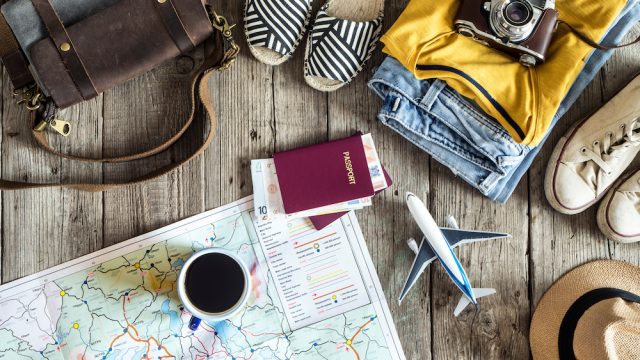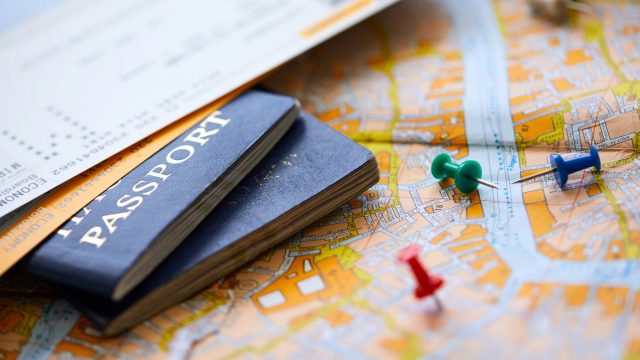One of the most frustrating things about travelling is when you find yourself figuring out how to deal with lost or damaged luggage. Arriving without your luggage at the start of an exciting adventure may taint your experience. Landing home but discovering loss or damage can put a dampener on a fantastic trip. We discuss the steps you should take to prevent and deal with lost or damaged luggage.
 Photo by: Brian Jackson/Fotolia
Photo by: Brian Jackson/Fotolia
Preventing lost or damaged luggage
Ensure you’ve picked an appropriate type of luggage and that there’s no previous damage. Small padlocks can be bought for suitcases to deter thieves. Keep the key(s) in a safe place on your person or in hand luggage.
Place your details clearly on the inside and outside of the luggage- this could be a sticky label containing your mobile number.
Choose a way to easily identify your luggage; this could be placing a sticker or label on the outside, or simply choosing a brightly coloured suitcase!
Make sure you check the airline label attached to the case you pick up- you wouldn’t want to walk away with someone else’s case.
If there are two people in your travel party, consider splitting your clothes between two suitcases. This means that if one case gets lost, you will both still have some of your belongings.
Take photos of your luggage before you leave. It will demonstrate the quality of the luggage and also serve for identification purposes.
Avoid taking expensive items with you; either leave them at home or pack them securely in your hand luggage. If you know you’re carrying valuable goods, take out a “special declaration of interest in the delivery of your luggage” with the airline to increase the amount of cover. Check the small print of your travel insurance to check these items are covered.
Before flying, check the airlines “Conditions of Carriage” which often lists items they won’t take responsibility for.
Top tech
If losing luggage is a big concern for you, why not look into technology such as the ReboundTAG? Essentially a microchip for your luggage, the tag can be scanned at airports to identify your luggage. You can even use a GPS tracker to know its exact location.
Where’s my luggage?
You’re waiting at the luggage terminal and your bag hasn’t turned up. The first thing you should do is report it missing with the airline. This isn’t a legal requirement but getting and completing a Property Irregularity Report (PIR) will speed up any future claim you may make against loss or damage.
Most missing luggage is found within 72 hours but your luggage is only officially lost after 21 days. If your luggage is returned to you outside the airport you have up to 7 days to report any damage to the airline. Airlines will not reimburse general wear and tear claims that don’t affect the structural integrity of the luggage. Any found luggage will be sent directly to you from the airline so you won’t have to resolve this yourself.
If you have to replace any items of your missing luggage, be sure to keep the receipts to claim costs from the airline but be aware of what the airline will cover. Airlines must cover “essential items” so check directly with them exactly what this means. It could mean a new outfit to change into, or it could mean the laundry costs for what you arrived in! Send copies of receipts to the airline when making a claim for compensation.
Once you’ve reported your luggage as missing, the airline will have a way for you to keep updated with their tracking. There’ll be a reference number you can use to check developments either by telephone or online.
 Photo by: magdal3na/Fotolia
Photo by: magdal3na/Fotolia
Know your rights
The Montreal Convention was a treaty agreed in 1999 by members of the International Civil Aviation Organisation (ICAO). Part of this set the maximum liability of airlines for lost luggage. It’s currently 1,131 Special Drawing Rights (SDR), a mix of currency values that represent a claim to currency. This means that the airline is responsible, to a degree, for your luggage.
In some cases, your travel insurance may be able to cover a higher value than what the airline will so a claim to them could be better. The airline will be able to provide proof of loss, damage or delay to support your claim.
If you are claiming from the airline, submit any relevant paperwork and copies of receipts within 21 days of your luggage being lost. These can take up to two months to process. Any compensation awarded from the airline will be paid either as an upfront cash payment, fixed daily budget or remittance once a full claim has been submitted.
If you’re unsure of your rights, the European Commission has an app available for smartphones. Search “Your Passenger Rights” in the app store and download to your phone.
Happy flying!
Do you have any top tips you’ve found useful for identifying your bags? Let us know in the comments.
Make sure you follow us on Twitter and Facebook for the latest travel tips and news. Remember to sign up to our newsletter below for the latest deals.
Subscribe to our newsletter
Want our blogs emailed direct to you? Sign up below to get updates featuring our blogs and car hire top tips. Receive the best deals on car hire straight to your inbox.
Written by Jessica Juby.





